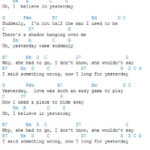For every acoustic guitar player, regardless of their unique style, preferred gear, or playing nuances, there’s one universal truth: strings need changing. As a content creator for guitarplayers.net, and having spent years around guitars as a repair technician, I’ve witnessed countless approaches to restringing – some effective, others not so much, and a few truly bewildering. From pricking fingers on rusty string ends to spending excessive time removing old string remnants, the struggle is real for many.
A surprising number of guitarists, even seasoned players, hesitate to restring their own instruments, often fearing they might inadvertently cause damage. This guide aims to demystify the process, offering clear, easy-to-follow instructions and helpful tips gleaned from years of hands-on experience, making guitar restringing a less daunting and even enjoyable task.
When to Change Your Acoustic Guitar Strings
One of the most common questions from guitarists, especially beginners, is: “How often should I change my strings?” There’s no single definitive answer, as string lifespan is influenced by several factors. These include your playing style, how frequently you play, and even your body chemistry, particularly sweat acidity. Some players with more acidic sweat might find their strings degrade rapidly, perhaps within just 30 minutes of playing, while others might get months of use from a single set.
Image alt text: Close-up of heavily used acoustic guitar strings showing visible grime and rust, emphasizing the need for string replacement for optimal sound quality and instrument health.
In my experience, a good rule of thumb is to change strings if you notice visible grime or buildup, especially on the underside of the strings near the fretboard. Another indicator is wear or dents on the wound strings, particularly where they contact the frets. Ultimately, personal preference plays a role. Some musicians prefer the bright, crisp tone of brand-new strings, while others favor the mellower, more settled sound of strings that have been played in a bit. Experimenting to find the “sweet spot” for your preferred tone and string life is key to selecting the right strings and change frequency for your needs.
Avoiding Common Restringing Mistakes
Restringing an acoustic guitar is generally straightforward, but there are a few common pitfalls to watch out for. One frequent mistake is accidentally losing small, crucial parts during the process. Many components on an acoustic guitar, such as bridge pins, the saddle, the nut, and tuner bushings (the small sleeves around the tuning pegs), are held in place primarily by string tension. Especially on older guitars, these parts can become loose and easily fall off when the strings are removed. These tiny pieces can be notoriously difficult to find if they drop onto the floor or disappear under furniture. Therefore, I always recommend restringing your guitar on a clean, uncluttered table or workspace to minimize the risk of lost parts.
For archtop guitars specifically, the bridge is almost always held in place solely by string tension. When restringing an archtop, it’s essential to carefully note the bridge’s exact position before removing the old strings. A simple and effective method is to use low-tack masking tape. Before applying, reduce its stickiness by briefly adhering it to your clothing. Then, apply a small piece of tape on either side of the bridge, marking the tape’s edge with a pencil aligned to the bridge’s front edge. This allows you to precisely reposition the bridge in its original location after restringing, maintaining proper intonation and playability.
To further simplify the process and prevent lost bridge pins, I prefer to anchor all the new strings at the bridge or tailpiece first, before winding them onto the tuning posts. When inserting strings into a pin-style bridge, ensure the ball end is properly seated against the bridge plate inside the guitar body. Sometimes, the ball end can dangle below the plate, leading to unwanted buzzing or rattling. Insert the string ball into its designated hole and loosely insert the bridge pin. Gently pull upwards on the string until you feel the ball end firmly seat against the underside of the guitar top, then firmly press the pin into place. If your guitar has a tailpiece, double-check that each string’s ball end is securely anchored before bringing the string up to tension, as these are more prone to slipping out during installation.
The Simple and Effective Z-Bend Stringing Technique
In my early guitar days, I learned a somewhat complex stringing method that involved tucking the string’s free end under the initial winding on the tuning post to lock it and prevent slippage. It took considerable practice to master this technique without creating slack in the string loops, and removing old strings from the tuners was often challenging. Strings would frequently break at the post, leaving sharp, small rings of string stuck in the tuner holes, requiring pliers to remove – a frustrating and sometimes painful process.
However, at Veillette Guitars, my first professional guitar job, I discovered a far simpler and more effective method that has become my standard approach. This technique, known as the “Z-bend” method, is incredibly reliable and versatile. I’ve successfully used it on a wide range of string gauges, from very light .007 strings under high tension to heavy .095 sub-bass strings, and they have consistently held firm without slipping. Even when tuned to the point of breaking, the strings will invariably snap before the windings ever slip on the tuning post.
Image alt text: Illustration depicting the Z-bend guitar stringing method, clearly showing how to bend the string in opposing directions around the tuning post for secure and slip-free installation.
The Z-bend technique is based on creating opposing kinks in the string on either side of the tuning post. Simply insert the string through the hole in the tuning post, pulling it through and leaving a small amount of slack between the guitar nut and the bridge – roughly enough to fit four fingers between the string and the fretboard when stretched. Then, simultaneously bend the string on both sides of the tuning post to create a Z shape through the hole. (For bass-side strings, bend both sides clockwise). Clip off the excess trailing end of the string. Begin winding the string onto the tuning post, ensuring each new wrap goes below the previous one, progressively bringing the string closer to the headstock as you wind.
If you’ve left the correct amount of slack, you should achieve two to three wraps around the post for heavier gauge strings and up to five wraps for thinner strings. Too many wraps can lead to tuning instability, as the windings can pile up unevenly and not wind smoothly around the post. Conversely, too few wraps might result in string slippage, regardless of the winding technique.
Stringing with the Z-bend method is not only faster than other techniques I’ve encountered but also exceptionally reliable. It has proven itself over tens of thousands of strings I’ve installed. Furthermore, strings are easily removed from the tuning posts, and even if a string breaks at the post, the remaining end simply falls out of the hole, eliminating the need for tools. Over the years, I’ve dealt with strings that were double-threaded, knotted, twisted, and even glued onto tuning posts – unnecessary complications that the Z-bend method completely avoids. Whether you prefer to change your strings yourself or have a technician do it, adopting this simple and foolproof approach will make the process much more reliable, efficient, and enjoyable.


